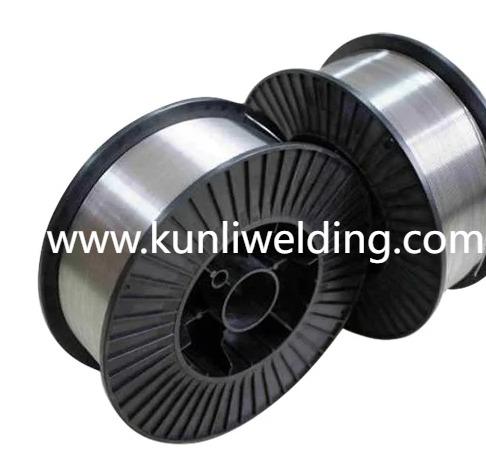-
Fil d’actualités
- EXPLORER
-
Pages
-
Groupes
-
Evènements
-
Reels
-
Blogs
-
Offres
-
Emplois
-
Forums
-
Film
Kunliwelding When Is ER4943 Preferred Over Traditional Silicon Rich Fillers

In industries pushing for lighter structures and tougher joints, material choice often steers project outcomes, and Aluminum Welding Wire ER4943 is singled out by many fabricators when a weld must combine better as welded strength with familiar handling. This filler sits between classic silicon rich wires and higher strength alternatives, offering a weld deposit that behaves predictably in stressed assemblies while still flowing and finishing in a way that shop teams appreciate.
What sets this wire apart in high strength contexts is how its alloy tweaks change weld metal behavior. Unlike fillers that rely on dilution from base metal to gain strength, this wire's chemistry delivers higher yield and tensile properties in the as welded condition while keeping a relatively low melting point and good fluidity. That combination helps the deposit resist the kinds of solidification problems that can appear when joining stretched or loaded panels.
Why that matters now: designers across transport and energy sectors are specifying lighter gauge structures to meet efficiency and handling goals. When the structure must also bear load or face cyclic stresses, the filler's as welded strength reduces the temptation to overbuild parts just to compensate for weaker joints. Put another way, a thoughtful filler choice lets engineering teams meet lightweight targets while preserving needed joint performance. Industry commentary and manufacturer briefings point to this balance as a practical route to lowering repair frequency without changing core fabrication methods.
Operational benefits show up on the shop floor. Fabricators report that the wire produces a steady arc and a deposit that sands and prepares for coating with less aggressive dressing than some high strength alternatives. That reduces touch up time in finish-sensitive runs and shortens the handoff time to painting or sealing operations. For repair shops and fleets this means fewer repeat interventions and faster return to service for damaged components.
But the wire is not a universal fix; its strengths are best realized when paired with disciplined welding practice. Controlling heat input, maintaining consistent joint fit up, and using appropriate shielding habits all help the deposit retain its intended properties. Fabrication teams that incorporate short validation runs on representative assemblies tend to find the right balance of travel speed and interpass conditions that deliver reliable, low distortion joints in production. Those validation trials also reveal how the filler interacts with coating prep and sealing steps, which is crucial for appearance sensitive work.
Corrosion behavior and lifecycle thinking also influence the selection. Where assemblies face corrosive environments, choosing a filler whose weld surface and deposit chemistry play nicely with downstream coatings reduces long term maintenance. Procurement teams increasingly treat the filler as part of a system that includes surface treatment and repair strategy rather than as an isolated consumable. That systems view narrows surprises during field service and reduces the total labor embedded in repairs.
Supply and qualification logistics matter in adoption decisions. When buyers commit to a wire for high volume runs they want predictable supply and clear handling guidance so spools arrive ready to feed. Product notes that spell out packaging, storage recommendations and suggested trial protocols shorten qualification cycles and reduce the risk of contamination related problems. Working with suppliers who support sample programs and who publish application guidance helps teams move from trial to production with fewer setbacks.
Safety nets for trialing the wire include: run representative weld coupons that match your joint geometry; inspect bead morphology and fusion quality under the same finishing steps you will use in production; and stage a short fatigue or stress test if the part will see cyclic loading. Capturing the feed, heat and finishing settings that produced acceptable results gives fabricators repeatable parameters they can deploy across shifts and across sites.
In short, the wire's distinctiveness in higher strength applications comes from a pragmatic metallurgy that raises as welded strength while retaining weldability traits fabricators know how to manage. When engineering, welding and procurement teams align on trial plans, handling, and finish expectations, that filler becomes a dependable tool for keeping assemblies light, serviceable and quicker to finish. To review product guidance and application notes from the manufacturer visit the resource area at www.kunliwelding.com .
- AI
- Vitamins
- Health
- Admin/office jobs
- News
- Art
- Causes
- Crafts
- Dance
- Drinks
- Film
- Fitness
- Food
- Jeux
- Gardening
- Health
- Domicile
- Literature
- Music
- Networking
- Autre
- Party
- Religion
- Shopping
- Sports
- Theater
- Wellness


